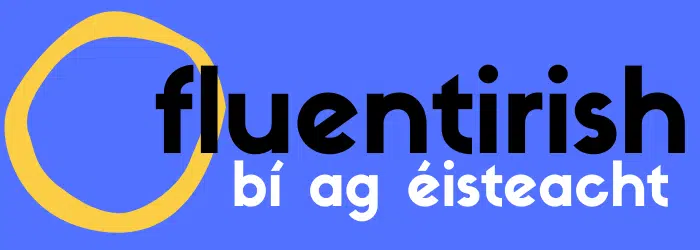More On B1 Level Irish Gaelic 🗣️
B1 Level Irish Gaelic 🗣️: How proficient is one that has attained B1 Level when it comes to Irish Gaelic? What can they do with that level? We cover all of that in this blog, so continue reading to learn more.
Learning a new language such as Irish may prove difficult for many, especially adults who do not have the time to study and have other, more important priorities in life. However, all is not lost!
If you do get the time, you can learn a new language and get certified following the CEFR, or the Common European Framework of Reference for Languages.
During the start of your language learning, you might encounter some strange terms when talking about proficiency.
Nuair a thosaíonn tú ag foghlaim teanga, b’fhéidir go dtiocfadh leat teacht ar roinnt téarmaí aisteacha agus tú ag caint ar inniúlacht.
“What level are you currently?” “I am A2 level at the moment. What about you?” “I’ve recently achieved B1 Level proficiency in Irish Gaelic!”
As a ‘newbie’, you might get confused with these unfamiliar terms and question their meaning. You might even feel left out and intimidated by the new jargon you overheard.
But you do not need to worry! Those are some commonly-used terms in the language-learning community that you will eventually learn.
Basically, they are levels and are used to assess how proficient a language learner is. In learning Irish using this framework, you have to take note of a few things, which we cover below.
>>Check out the latest podcasts on FluentIrish.com – and start improving!
Irish levels
For adults seeking to learn Irish through this method, you should know that it follows Teastas Eorpach na Gaeilge (TEG). It is a comprehensive, graded system that allows Irish learners to undertake examinations at five different levels of proficiency.
The TEG itself is based on the Common European Framework of Reference for Languages.
Different levels require different hours of studying. An excerpt from TEG’s explanation on the level:
Learners are advised to spend a particular amount of time studying and practising the language before undertaking each of the exams. The grid below gives a general guide as to the amount of time required to cover the syllabus material at each level. Learners at every level are advised to have as much contact as possible with the language. This can be achieved by attending teaching centres or conversation groups, through regular personal study, or through other opportunities for language use (television programmes and films, radio, reading online newspapers and magazines, keeping a diary in the language, etc.).
| Level | Hours of study recommended |
| Bonnleibhéal 1 (A1) | 80-100 |
| Bonnleibhéal 2 (A2) | + 160- 200 |
| Meánleibhéal 1 (B1) | + 350-400 |
| Meánleibhéal 2 (B2) | + 500-600 |
| Ardleibhéal 1 (C1) | + 1000 |
As mentioned, TEG offers five levels – A1, A2, B1, B2, C1. There are three levels called common reference levels, which are A, B and C. All of those levels are further divided into two levels, which are 1 and 2. The levels indicate what the learner can now do in reading, listening, speaking and writing the language.
Take a look at our blog titled ‘Irish language certificate‘ to learn more about the other levels.
B1 Level Irish Gaelic proficiency
Now, we proceed to the B1 Level itself.
Anois, téighimid ar aghaidh go dtí an Leibhéal B1 féin.
If you have already reached this level, we would just like to offer our congratulations to you! Can you imagine how long it takes to get to this level? 350-400 hours! I can’t even focus for more than 2 hours when it comes to… well, anything!
But how impressive is achieving B1 Level in Irish Gaelic, really?
Simply put, if you attained B1 level, then have the following expectations:
- Understand the main points regularly encountered in work, school, leisure, etc.
Deal with most situations likely to arise while speaking Irish. - Produce simple connected text on topics that are familiar or of personal interest.
- Describe experiences and events.
- Talk about dreams, hopes and ambitions.
- Briefly give reasons and explanations for opinions and plans.
- Could consider working in the Gaeltacht (e.g. bar/counter work, waiting service in cafés or basic office work)!
To attain this level, work your way through the levels by going attending courses such as those from Let’s Learn Irish.
Review the exam materials for B1 Level Irish Gaelic prepared by TEG to give you an idea.
Tips for Irish Gaelic beginner-level learners before B1: FluentIrish’s advice
Rome was not built in a day, as they always say. Likewise, don’t expect to learn Irish immediately, much less in just a day.
To help you get started, we suggest that you start searching resources online. Duolingo, for example, is an app that helps you start learning various languages, which includes Irish. You could also listen to audiobooks and podcasts (such as ours!) online to help you get started.
You only need a bit of time to listen and study in a day, every day, until you become much more proficient than before. Go at it until you feel comfortable going to the next level. Who knows, you may be faster than most in reaching the B1 level in Irish Gaelic!
Learn Irish through FluentIrish
Now that we have shared with you some useful information about the B1 Level in Irish Gaelic, we also want to discuss with you how we can help you in everything Irish-related.
ba mhaith linn plé leat freisin conas is féidir linn cabhrú leat i ngach rud a bhaineann leis an nGaeilge.
If you can understand simple Irish, you will want to improve. FluentIrish is here for you. Listen every day to get on with Irish.
Má tá tú ábalta Gaeilge shimplí a thuiscint – beidh tú ag iarraidh biseach a dhéanamh. Tá Fluentirish anseo faoi do choinne. Bí ag éisteacht gach aon lá chun a bheith ag gabháil ar aghaidh i nGaeilge.
We provide informative blogs and helpful podcasts that can help in your quest to learn the Irish language.
>>Which level?: Find out which level of spoken Irish you understand!




